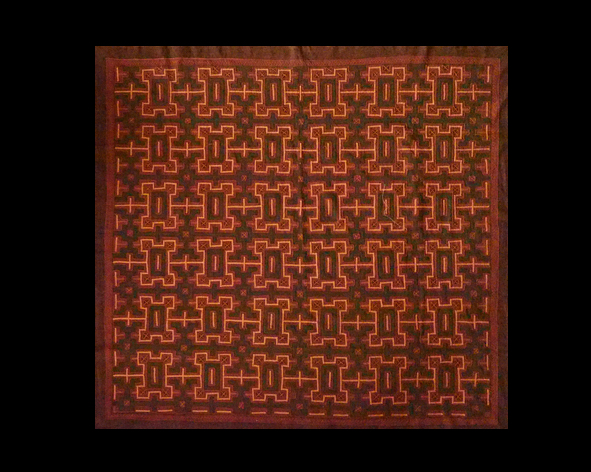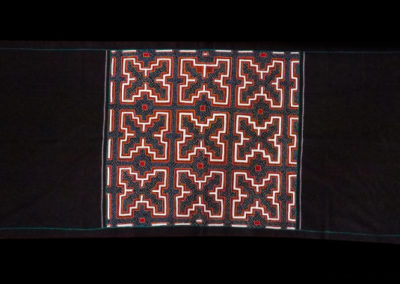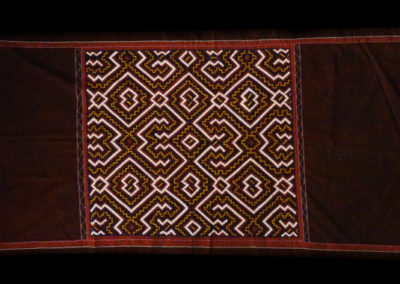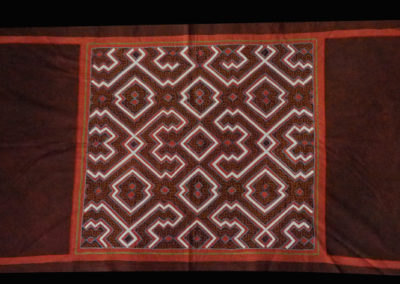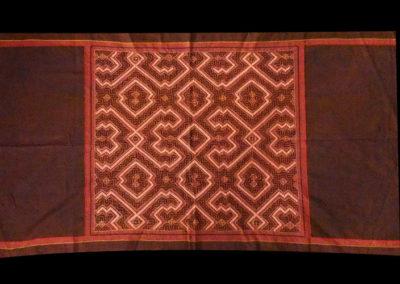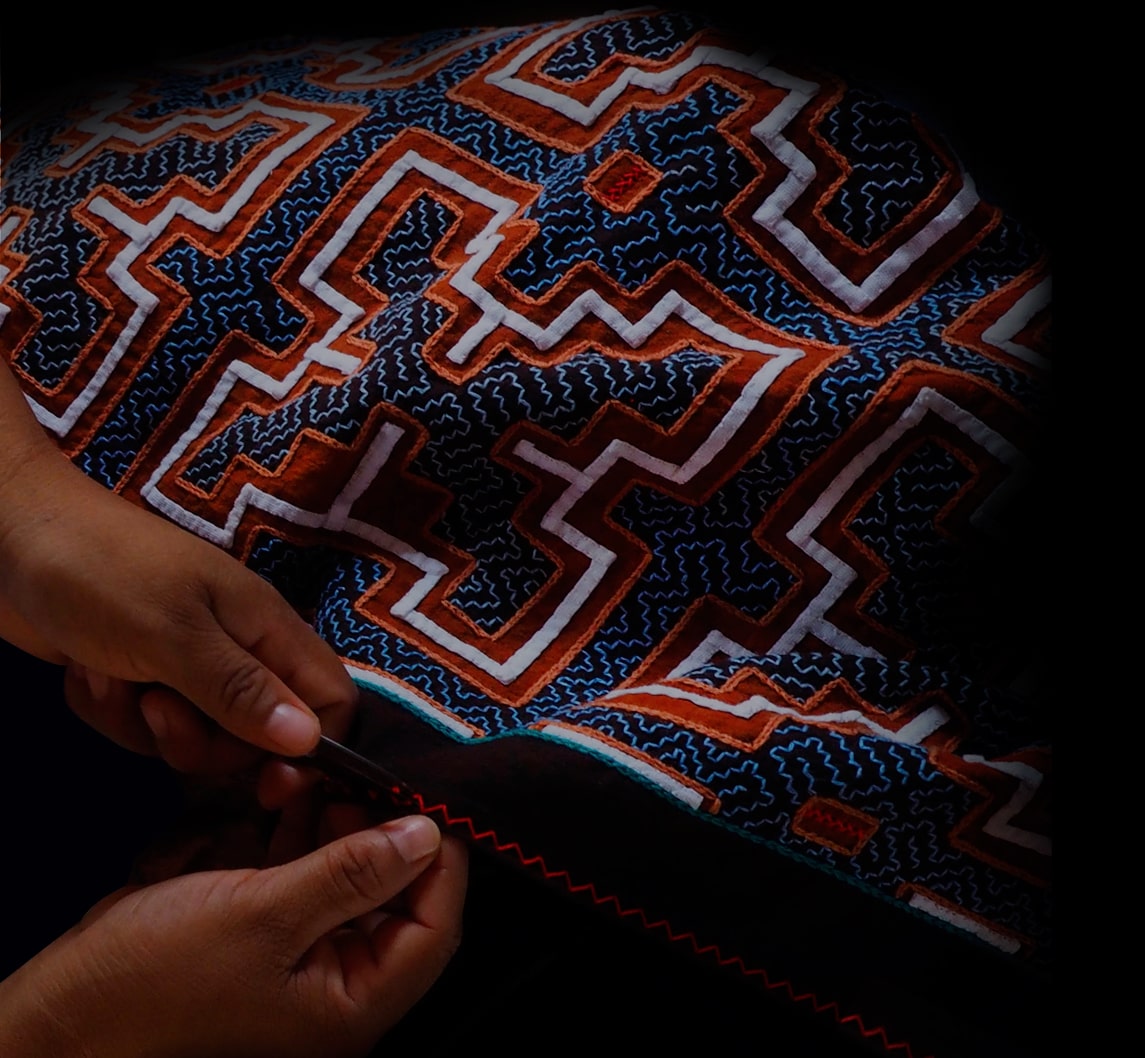
El Arte Textil Shipibo
El arte textil Shipibo es una forma vibrante e intrincada de artesanía tradicional que se origina en el pueblo Shipibo-Conibo, una comunidad indígena que habita en la selva amazónica de Perú. Reconocidos por sus distintivos patrones geométricos, estos textiles no son meramente piezas decorativas, sino que tienen una profunda importancia cultural, reflejando las creencias espirituales, la cosmología y la rica mitología de la comunidad.
Anacecilia Rojas Soria
El Arte Shipibo es una expresión artística milenaria que representa la riqueza cultural de nuestros antepasados. Gracias a ellos seguimos valorando nuestro Arte, permitiéndonos innovarlo cada dia y asi mantener viva nuestra cultura.

El Arte Textil de Anacecilia Rojas Soria
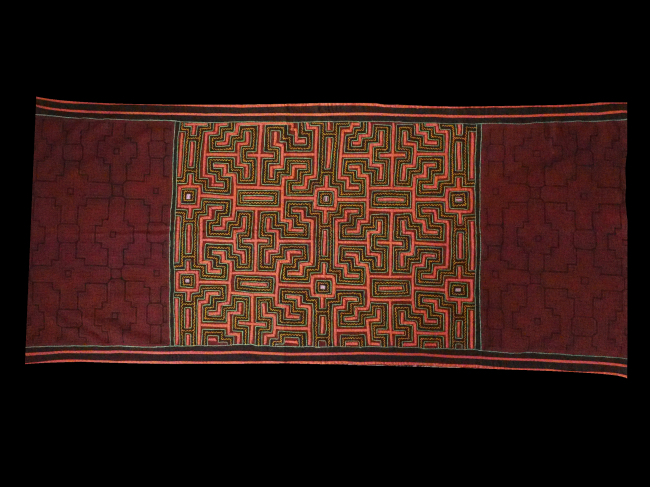
En el corazón del arte textil Shipibo se encuentra la simbiosis única entre la artesanía y la narración. Los patrones, conocidos como «kene» o «kené», se pintan meticulosamente a mano sobre la tela utilizando tintes naturales derivados de plantas y otros materiales orgánicos. Los diseños intrincados son creados por las hábiles manos de las mujeres Shipibo, quienes transmiten este conocimiento sagrado de generación en generación.
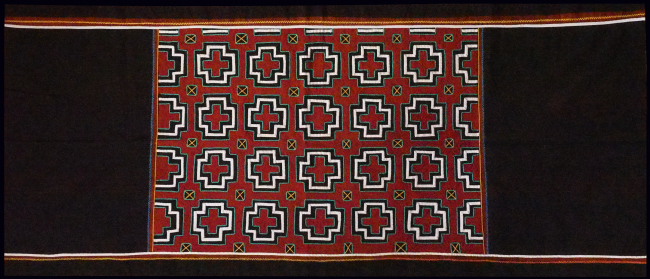
Los motivos en sí mismos son un lenguaje visual, cada uno representando un aspecto específico de la cosmología Shipibo. Espirales, zigzags y formas geométricas se utilizan para representar la interconexión de todas las cosas en el universo, reflejando la visión del mundo Shipibo que enfatiza la armonía y el equilibrio. Estos textiles a menudo sirven como una forma de poesía visual, transmitiendo historias de la creación, la interconexión de la naturaleza y el ámbito espiritual.
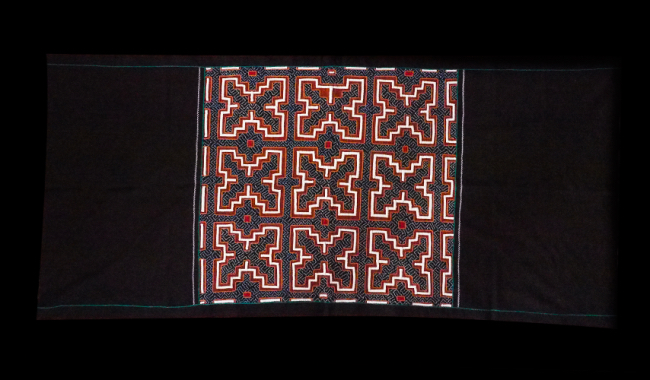
Los textiles Shipibo no solo son visualmente impresionantes, sino que también desempeñan un papel crucial en los rituales y ceremonias de la comunidad. Se cree que los patrones intrincados tienen un poder protector y curativo, y como tal, se utilizan comúnmente en prácticas de curación tradicionales. Los chamanes Shipibo, conocidos como «curanderos» o «curanderas», llevan estos textiles durante las ceremonias de curación, donde se cree que los patrones facilitan una conexión con el mundo espiritual y promueven energías curativas.
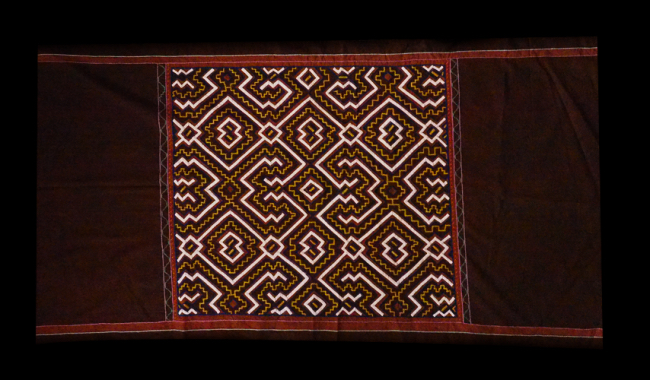
El proceso de creación de textiles Shipibo es intensivo en mano de obra e involucra una gran habilidad. La tela se teje a mano en primer lugar, utilizando algodón u otros materiales de origen local, y luego los intrincados patrones se pintan meticulosamente con un pincel fino. Todo el proceso refleja una conexión profunda con el mundo natural, ya que los tintes se obtienen de plantas, semillas y otros materiales orgánicos presentes en la selva amazónica.

En los últimos años, el arte textil Shipibo ha ganado reconocimiento internacional por su significado cultural y artístico. Los diseños intrincados y los colores vibrantes han cautivado a entusiastas del arte y coleccionistas de todo el mundo, dando lugar a colaboraciones entre artistas Shipibo y diseñadores contemporáneos. Estas colaboraciones no solo contribuyen a preservar y promover la cultura Shipibo, sino que también ofrecen oportunidades económicas para los artesanos indígenas.
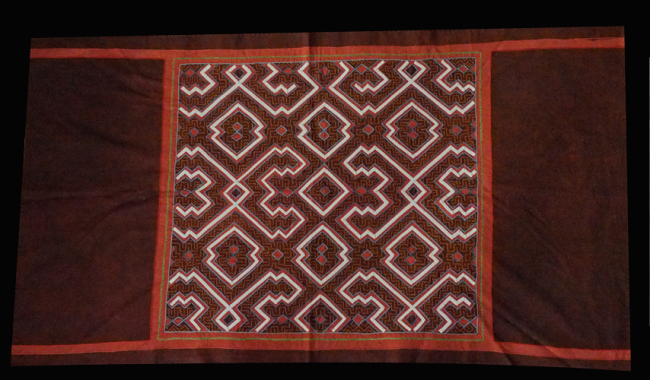
En esencia, el arte textil Shipibo es un testimonio de la rica herencia cultural del pueblo Shipibo-Conibo. Más allá de su atractivo estético, estos textiles llevan consigo las historias, la sabiduría y la espiritualidad de una comunidad profundamente conectada con el mundo natural. A medida que el mundo toma cada vez más conciencia de la importancia de preservar las culturas indígenas, el arte textil Shipibo se erige como un brillante ejemplo de la artesanía tradicional prosperando en la era moderna.
